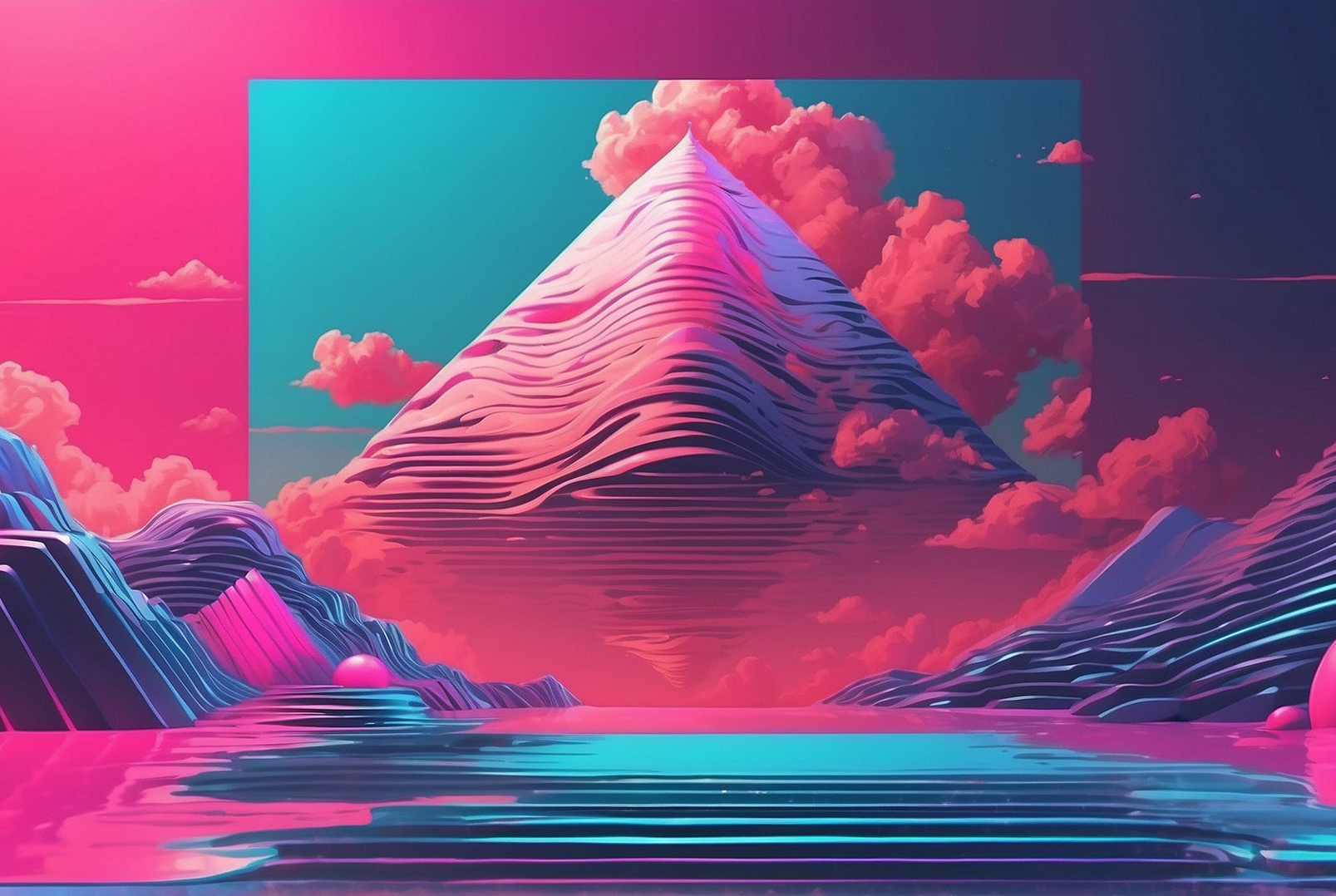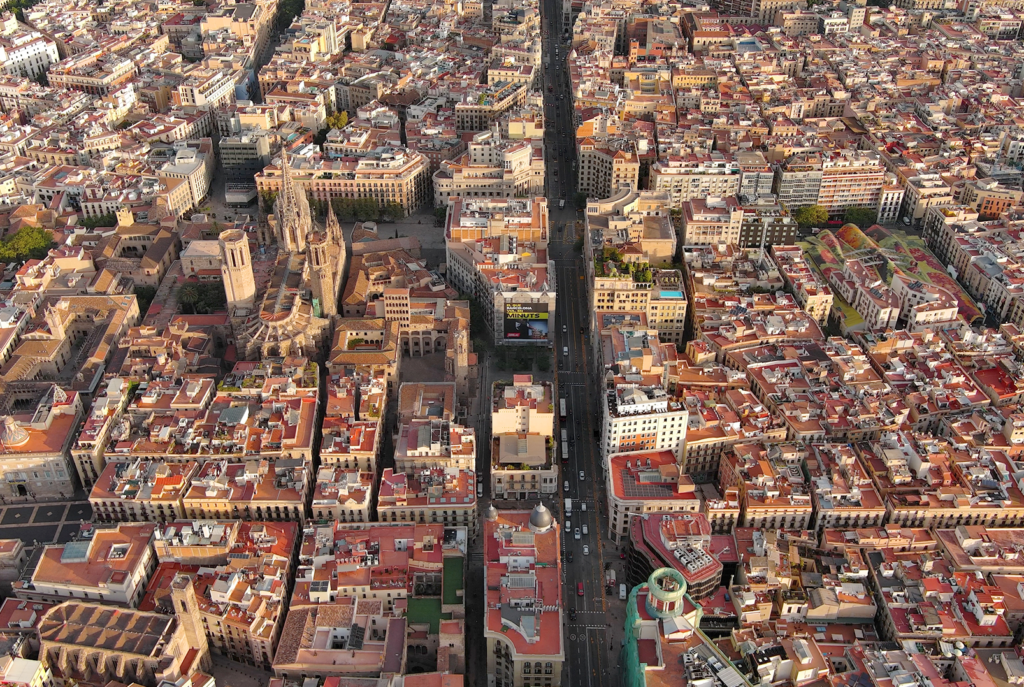Data: Lucidarchive, El Club Lento (Radio 3 Extra), Bandcamp, Aesthetics Wiki, Rate Your Music, Last FM, MusicBrainz
Software: Excel, Flourish, Tunebat
Original text in Spanish. Translated by DeepL Translator, sorry for any mistakes.
I discovered Vaporwave by chance in a blog (of which I don’t remember the name) back in 2014. It was just a paragraph of 9 or 10 lines and a couple of links to Youtube. One of the videos was evidently the Floral Shoppe of Macintosh Plus. Since that day I declared myself a fan of this genre and since then I have discovered countless very interesting artists, although the information I found about the origins of the genre and its structuring was scarce and/or confusing (at least for me). But one day in June 2022 the wonderful and necessary radio show El Club Lento presented by Álvaro Tarik premiered on Radio 3 Extra. Thanks to many of his episodes dedicated entirely to Vaporwave and its subgenres I understood better the idiosyncrasy that surrounds it.
In the hope of getting to know Vaporwave a little better, in this project I analyze and visualize interactively with data extracted from various sources the relationships between the different genres and subgenres associated with Vaporwave, the underlying feelings in the music of 100 songs, the geographical location of about 400 artists of the genre and the clustering of 1000 albums published between 2008 and 2023. It is an attempt to bring new approaches on how to explore this fantastic universe for newcomers and for those of us who have already enjoyed it for a while.
But before moving on to the visualizations it is pertinent to briefly explain what Vaporwave is and I think there is no better way than to go to the words of Álvaro Tarik, on June 24, 2022, in his first program of El Club Lento, where he exposed this brilliant definition of the genre:
More than a musical genre, vaporwave could be described as an aesthetic current, which is why the word aesthetics appears so recurrently linked to it. What is so special about this genre, or this micro-genre, of electronic music that, since its most important irruption in the music scene -back in 2011, with the release of the already legendary Floral Shoppe by Macintosh Plus-, so many people around the world have been captivated by its sounds and its aesthetics, that is to say, by its visual art?
To define vaporwave as concisely as possible, it is first necessary to understand that it is perhaps a mistake to get too serious in doing so. It is true that there is an arty will behind the music, a rather irreverent attempt to break with the imposed by the marketing in the background and in the form, even a tacit dystopian message that can justify it. But it is also true that, in tangible terms, vaporwave exudes a lot of irony, digital ugliness in many cases and musical principles that, without needing aggressiveness or histrionics, irritate reactionaries.
This is one of the things I like most about vaporwave: it sets a milestone in the history of popular music and, as it has happened with the different milestones that have marked currents through the decades, it has also aroused aversion among conservative positions. This underlines my motto that I have already made public on more than one occasion: If the music you listen to starts to please your parents, maybe it’s time to look for new things.
I recover the words of Michael Nesmith, charismatic member of the Monkeys, in an interview for Rolling Stone in 2018 in which he confessed his enthusiasm at having discovered vaporwave. In his 70s and quite a few years he said:
“I’d never heard anything like it before and I was passionate about it. I listen to it quite regularly now. I love it. The first reaction as you listen is that it’s abnormally slow. You think, this is weird, why are they singing like this? I don’t know, I like this. If you get the slightest bit distracted and turn to another train of thought, the music fading into that pool of liquid blue becomes captivating. It’s the most psychedelic thing I’ve heard since the psychedelics.”
The psychedelic aspect of vaporwave he refers to is striking. The fact is that it is a musical and aesthetic current with its own personality and that we should not confuse it with synthwave, trap, outrun, new age music, ambient, darkwave or smooth jazz, although sometimes styles overlap and artists mix music from different sources.
This trend has turned around a popular music that had been stagnant for a long time. And the truth is that not only has it achieved this, but it has also clearly influenced artists from other fields both musically and visually. The most critical and detractors, or simply those with reactionary attitudes, can become scandalized by what they simplistically consider stolen music or provocation in bad taste. Curiously, the same thing that already happened with hip hop, house music and, going back in history, with disco and rock and roll. In this, history will not cease to repeat itself in a loop of bold steps that are contested by those who prefer to remain legitimately in the comfort of the familiar. It is, as the psychologist Erich Fromm said, “the fear of freedom”. And curiously, vaporwave leapt into the future dragging behind it, as if in a tailwind, echoes of the past and returning them to our brains in a confused fog, as if it wanted to make us doubt that the past ever existed. Or if it is simply that some higher being has implanted it in our memory.
Or maybe it is not that the world is going to disappear soon, but that perhaps it no longer exists and we have not yet realized it.
Álvaro Tarik, El Club Lento















In this first visualization using machine learning techniques with the Tunebat tool, I analyze 100 tracks of the genre through feeling metrics (Energy, Danceability and Happiness) on a scale from 0 to 100. The results provided by Tunebat are visualized in the form of a radar graph in Flourish. he radars are displayed in groups of 6, following the order of the playlist.
The tool examines and extracts characteristics of the instrumentation, speed, pitch, chord progression and melody of the music. Some tonalities, rhythms or melodic patterns may be linked to certain emotions. For example, major chords and fast rhythms may be associated with happy and optimistic emotions, while minor chords and slow rhythms may evoke sadness or melancholy.
However, the interpretation of emotions in music is subjective and varies from person to person. And in the case of Vaporwave this analysis I would say is less precise than in other more musically structured genres such as pop or rock.











In this second visualization, with data extracted from Aesthetics Wiki, El Club Lento (Radio 3 Extra), Rate Your Music, Last FM and MusicBrainz I have created in Flourish a network of relationships between musical genres associated to Vaporwave segmented in 3 categories, where the arrows indicate the direction of the relationship in terms of which genre has influenced which genre.
- Featured Vaporwave genres: genres specific to Vaporwave.
- Nearby genres: geners directly associated with Vaporwave.
- Distant genres, genres associated with Vaporwave through the Nearby genres.
The relationships between musical genres are complex and often intersect, as music is a constantly evolving art form and is influenced by a variety of cultural, social and geographic factors. Music continues to evolve as artists explore new ideas and fuse influences from diverse sources.
The Vaporwave scene since its birth in 2010 has evolved with new sub-genres and constant experimentation. Artists often experiment with various styles and techniques, creating works that often do not strictly adhere to a single category. These genres and subgenres often intertwine and influence each other which contributes to the richness and diversity of Vaporwave.
Explore the genre definitions and the connections between them. Place the cursor over any node (point) and isolate its relationships from the rest of the network. If you want, remove the “Distant genres” category from the visualization and analyze only the network composed of the other 2 categories.











In this third visualization, with the data that exist in the Lucidarchive database enriched with other sources such as Bandcamp, Rate Your Music y Last FM, I have distributed in maps (world map, United States and United Kingdom) the location of about 400 artists/pseudonyms of the genre, although for some of them the place where they reside is unknown. Each point corresponds to a pseudonym and in it emerges the information of which artist it is and in which city it resides. With the magnifying glass you can search for a specific artist/pseudonym.
Anonymity is a notable feature in the Vaporwave scene, and many artists choose to remain anonymous or use pseudonyms rather than reveal their real identity. By remaining anonymous, artists are able to divert attention away from their personal identity and focus more on the music and aesthetic they are creating. This reinforces the idea that vaporwave is an artistic and cultural movement rather than focused on individual personalities. Not all vaporwave artists opt for anonymity, and some openly share their identity and other personal and professional aspects through social networks or with interviews given to specialized media. The choice to remain anonymous is an individual decision and may vary according to each artist and their specific artistic approach within the genre.










In this fourth visualization using text mining techniques performed with the Orange tool, I have clustered 1000 albums released between 2008 and 2023 from a dataset extracted from Rate Your Music. Orange has found 20 clusters based on the Vaporwave subgenres labeled in the dataset.
The Y-axis corresponds to the release date and the X-axis to the score Rate Your Music users have given to each album. Lines are also displayed between some of the dots indicating that the albums belong to the same artist. You can view the clusters as a whole or individually. The pop-up information for each point shows the album title, artist name, user rating and release date.
Clustering Vaporwave albums presents difficulties due to the eclectic nature and wide variety of styles and approaches within the genre. Many subgenres incorporate elements of other musical genres, making identification and classification more complex. Artists take an experimental approach, challenging musical conventions and exploring new forms of audio manipulation. This can make it difficult to group into clusters based on traditional criteria.
It is important to recognize that any grouping will be, in a sense, a simplification, as many Vaporwave artists enjoy defying conventional categories and experimenting with stylistic ambiguity.
If you liked the project and you think you can provide useful information to enrich the visualizations let me know through the contact form. And if you feel like it you can support the artists on their Bandcamp profiles.



